Pourover Coffee: The Ultimate Brew Guide
So you’re a coffee fanatic and you love drinking pourover coffee? Great, me too.
Before we get brewing, let’s just clarify a couple of things so we’re both on the same page.
Did you know, that pourover coffee is actually a sub category of filter coffee. So if you’re already brewing pourover coffee and love it, there’s a change you’ll love other coffee brewing methods that fall under ‘filter’ too. But more on that later….
It’s worth defining the differences between filter coffee and espresso though, so you’ll get a deep understanding on how and why coffee typically get’s labelled either filter or espresso.
In fact, as I write this, I’ve just been inspired to write a detailed blog on the topic of Filter VS Espresso, so thanks for taking the time to visit our coffee blog. In the meantime, here’s a quick summary to bring you up to speed:
Filter Coffee Vs Espresso: The Science
Unless you’re an absolute coffee nerd and switch daily between filter and espresso based drinks, then it’s normal to take a preference to one or the other. The main difference between the two is the brewing process, the coffee used and simply how the coffee is extracted.
Let’s deep dive into the various brewing styles and the associated popular coffee brewing devices:
Immersion
A perfect example of immersion brewing is the classic Cafetiere brewer. How does it work?
Hot water is saturated with freshly ground coffee as the water saturates for around 6-9 minutes. During this process, the hot water and coffee infuses extracting both caffeine and beautiful flavour notes of the speciality coffee. No gravity or force is applied, and the only variable is time.
Gravity
One of the most popular methods on the market for manual pourover coffee is the gravity method. The reason it’s called gravity (or drip coffee) is because water passes through coffee at it’s own flow rate using gravity. Time is the variable here, and this is singularly controlled by the coffee grind setting you use.
A medium grind is used for gravity methods and common brewing devices include, Hario V60, Chemex, and any pourover coffee making device.
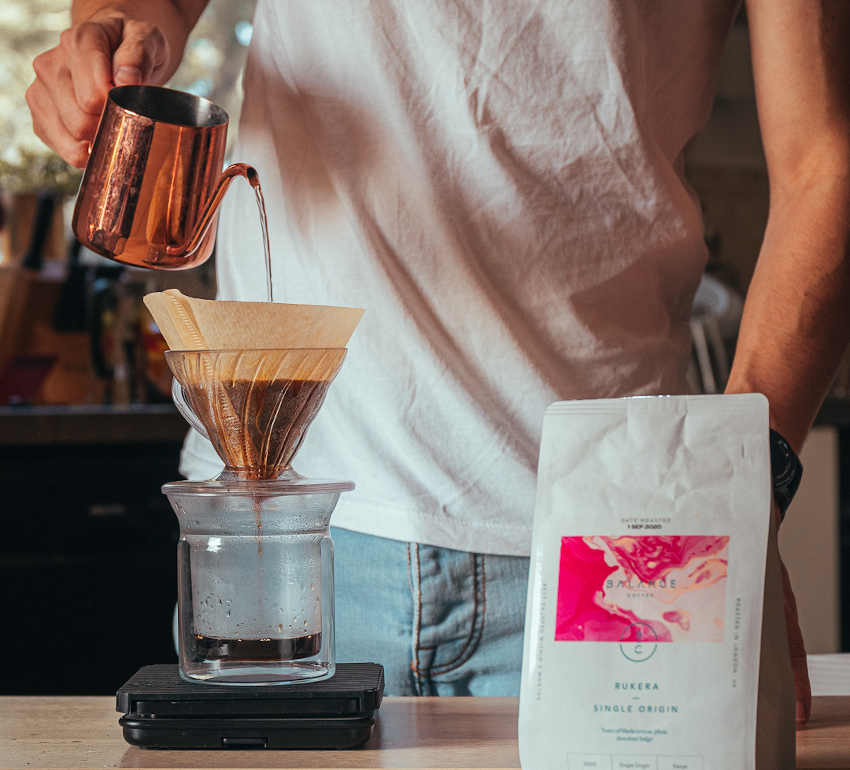
Pressure
The last type to cover is pressure. This means that the brewing device you use creates some force to push water through the coffee grounds using pressure. The result is an increase in body which can result in a rich delicious cup of coffee.
The popular Aeropress Coffee Maker uses approximately 3 bars of pressure since you manually apply hand pressure. Although, it has been labelled as an espresso maker it’s primary function is filter coffee because espresso is classified at around 8-9 bars.
Next up is the Moka Pot which uses around 1.5 bars of pressure generated by water reaching boiling point. It then forces water upwards to create a full bodied coffee. This method is traditionally very popular with Italians.
Finally, we’re on to the Espresso Machine which distinctively different to all the other methods described above. So why does it deserve its own category?
Well, since a high powered espresso machine forces water under extreme pressure (9 bars), it creates a very different result in the cup. I’m sure you’ve tasted a shot of espresso, or a flat white or americano? An espresso machine is used to create a far much viscous and concentrated beverage which is also much shorter in volume.
Espresso packs a punch, which is why is pairs perfectly with milk to create flat whites, lattes and cappuccinos.
Hopefully this has provided you with a good understanding on the differences between filter coffee and espresso.
Now let’s delve into pourover coffee since that’s why you’re here right?
Types of Pourover Coffee:
Pourover coffee has been around since 1908, when it was first popularised by Amalie Auguste Melitta Bentz. So how did she discover this forge this new coffee brewing device?
Fortunately for us, she was fed up with drinking percolated coffee because of the excess coffee grounds left in her cup. She decided to invent a device that used blotch paper with a small hole in to trap the coffee grounds as the coffee was brewed. Thankfully, this produced a far cleaner cup and the Melitta Brewer was born.
In recent years, brands like Hario have created popular version including the Hario V60. You can read our guide fo brewing with a Hario V60.
Hario V60
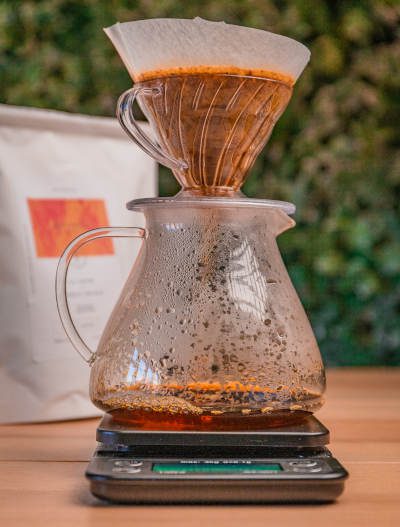
Hario V60 coffee filtering into decanter
Chemex Coffee Maker
Other Devices
There are other filter coffee devices for pour over coffee that we will share with you for consideration.
Best Coffee for Pourover
So what coffee do we recommend with pourover coffee?
Does any coffee work or do you need to consider some additional factors?
Here’s the thing: coffee is very subjective. If you like a dark roast, you’ll want a richer flavour profile than a light to medium profile which will be naturally sweeter and more delicate in flavour. There is no right or wrong when we’re talking about what you like.
However, I can certainly provide some expert guidance having worked within the coffee industry for over a decade…
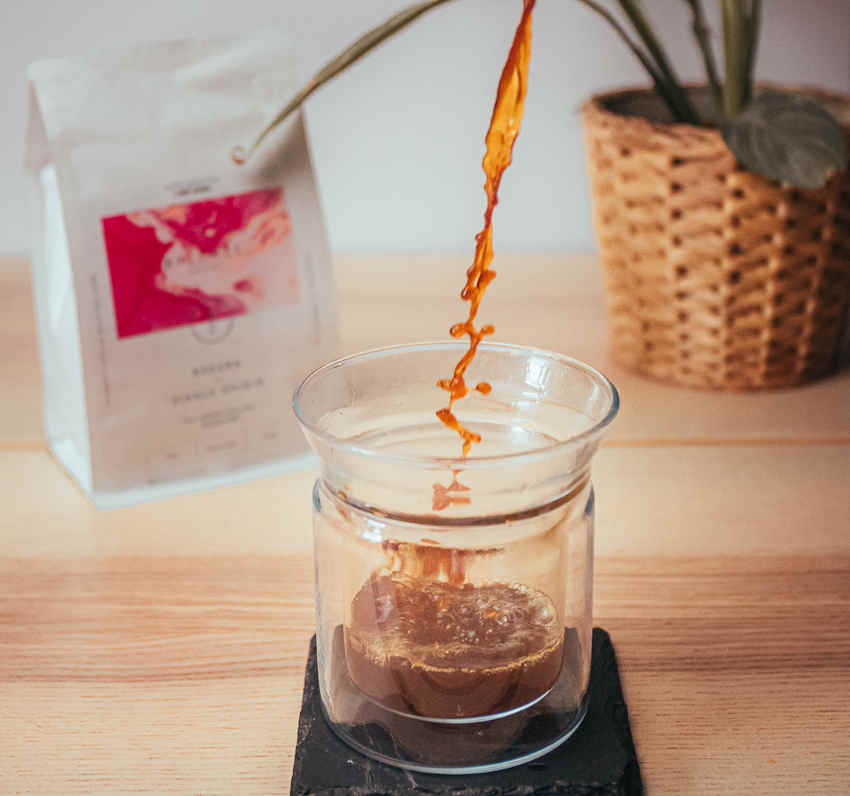
If you’re drinking pourover coffee it’s likely that you enjoy a clean filtered cup?
Part of the reason it takes so clean is because the paper filters are used to help trap coffee oils and grounds from sliding into your cup. Therefore, I recommend trying a rare and exclusive single origin coffee since the coffee beans are a light to medium roast profile and don’t contain many oils.
In fact, single origin coffees that are light or medium or roast profile are perfect for brewing with filter coffee. Why? Because you get to taste every subtle note of coffee in your clean filtered cup.
At Balance, we focus on sourcing some of the best coffee beans in the UK, so you can get your hands on them. Try them out and let us know your thoughts.
Best Pourover Coffee Makers
So you’re looking to buy the best pourover coffee maker or simply want to upgrade? it’s always a good idea since you can explore more flavours and brewing styles with different methods. Each give you a unique result.
To find out what the best pourover coffee maker in the UK is, we’ve broken them down into two categories for you below.
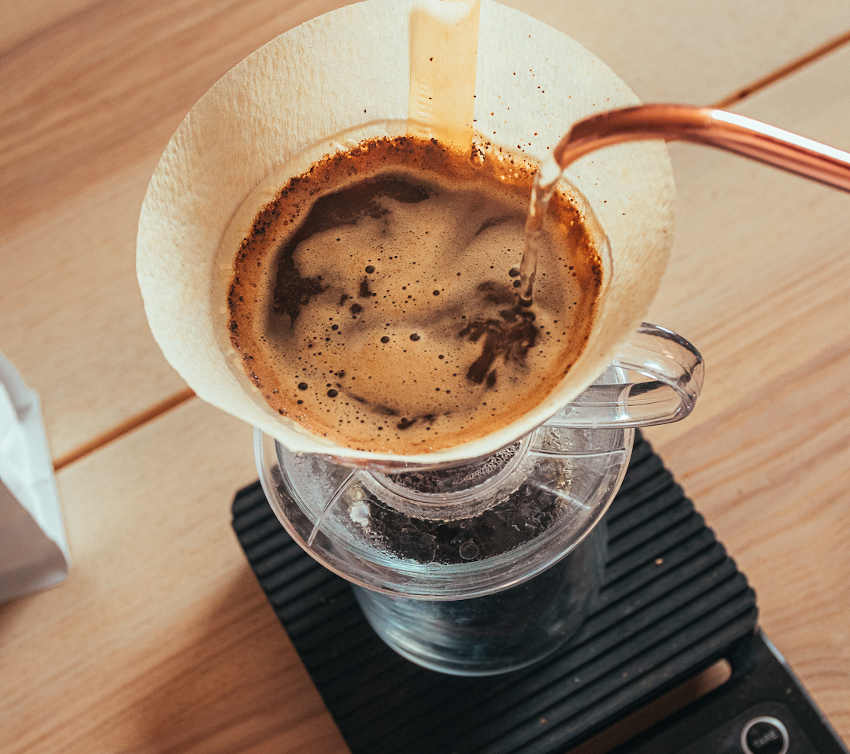
Manual Pourover Makers
Hario V60
Chemex Coffee Maker
Automatic Pourover Makers
Bodrum Coffee Maker
The pourover coffee maker bodrum is exactly what you need if you want to upgrade to one of the best automatic coffee machines designed for drip coffee.
The Perfect Pourover: What you’ll need:
Equipment List
Coffee Scales
Best Coffee Grinder for Pourover
Best Electric Kettle for pourover
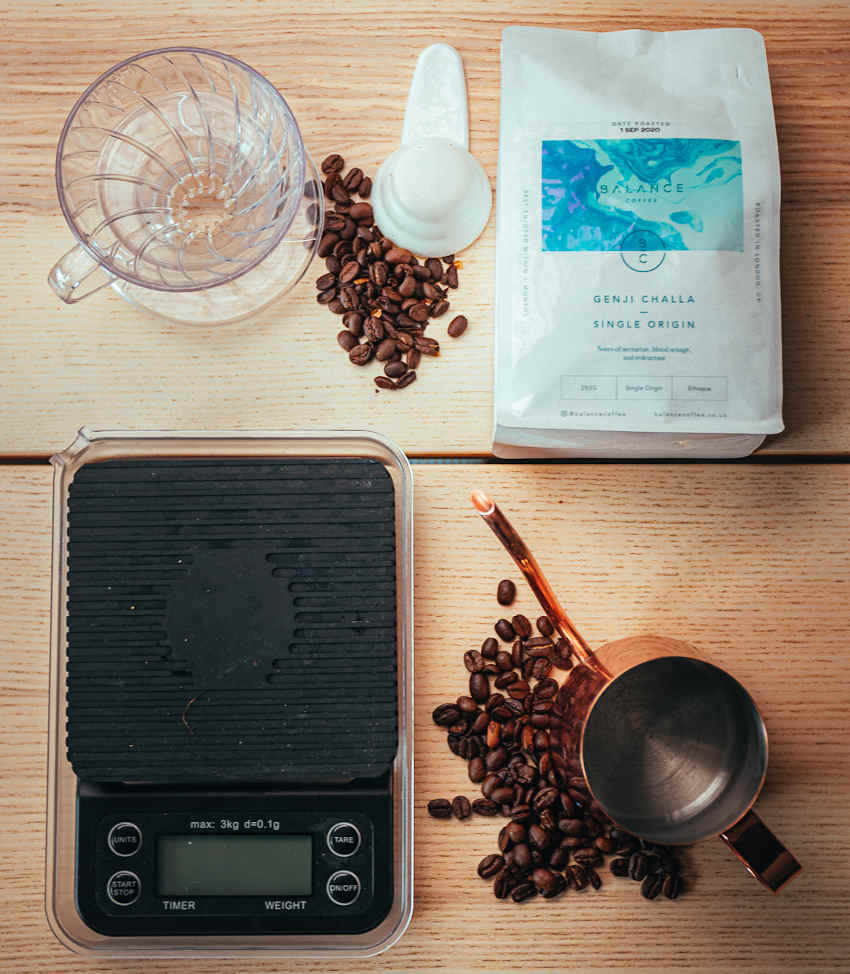
Pourover How To:
The method:
Bloom stage.
Insert videos how to from our youtube channel
Pourover Coffee Ratio
Understanding coffee ratios is one of the most important factors when producing worldly tasting coffee.
Becoming a Barista Pro with Pourover Coffee:
If you’re a total coffee nerd, and you love weighing you coffee, buying beans, grinding fresh and analysing every brewing detail then there’s a reason you continued reading.
Here is some top rated advice if you want to take things to the next level.
If you’ve ticked off all the equipment buys, weighing and technique, there’s only two things left to consider;
1. Buy the best coffee beans in the UK.
2. Invest some time and money in exploring the best water for coffee. Why? well water takes up 98% of your brew and if you aren’t using the best possible water when you are brewing coffee, you’ll always lose
Check out our guide on choosing the right water for coffee to take things to the next level.
The post Pourover Coffee: The Ultimate Brew Guide appeared first on Balance Coffee.
from Balance Coffee https://balancecoffee.co.uk/pourover-coffee/
Comments
Post a Comment